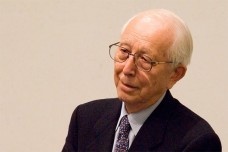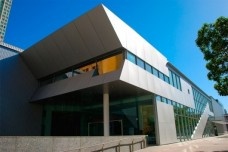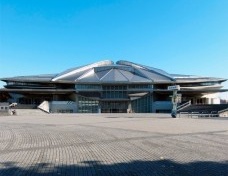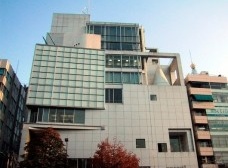
newspaper
news
The American Institute of Architect’s Board of Directors awarded the AIA Gold Medal to Fumihiko Maki, Hon. FAIA, the Tokyo-based architect whose international body of work has served as an extended meditation on the relationship of the part to the whole in architecture and in cities. The AIA Gold Medal is the highest honor the AIA confers on an architect. It acknowledges an individual whose significant body of work has had a lasting influence on the theory and practice of architecture. Maki will be honored at the 2011 AIA National Convention in New Orleans.
AIA President George H. Miller, FAIA, notified Maki by telephone after the Board made its decision. “The United States is my second country,” Maki said. “I am very very honored by this distinguished award.”
What’s in between the part and the whole
Fumihiko Maki, perhaps Japan’s most pre-eminent living architect, began his career in the 1960s as a charter member of the Metabolists—a group of Japanese architects who first and foremost believed in the obsolescence of fixed forms and the endless possibilities offered by flexible and expandable modular structures. Throughout his long career, Maki carried with him this fascination with the expansion and arrangement of discrete formal elements, but over time it loosened and evolved into a theoretical approach to design he calls “collective” or “group forms.”
Maki’s approach to design is to assemble disparate collages of forms in his buildings; free-form, abstract volumes as well as elemental shapes—spheres, cones, cubes, cylinders. His buildings are multifaceted juxtapositions of both discordant unity and synchronized disarray. The intent in binding varied forms together is to draw attention to the exposed links between these ensemble compositions’ individual elements and exploit them as dramatic and revelatory markers of time and place, full of immediacy (and a bit of whimsy). It’s a much more liberal, humanist aspiration for architecture than his Metabolist roots, allowing for--and inviting--the ambiguity, conflict, and harmonious co-existence of diverse architectural ideals that color any successful building project. But it’s an approach that’s survived long past its theoretical forebears.
“Architecture must produce tension,” Maki wrote in his 1988 monograph, Fumihiko Maki: An Aesthetic of Fragmentation, “and the tension must be created from unstable orders.”
Read more

Photo: Harvard University Graduate School of Design

Yerba Buena Center for the Arts, San Francisco

Tokyo Metropolitan Gymnasium

Spiral Building, Tokyo

